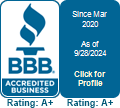
Effective Strategies for Consolidating Medical Debt
Although more than 90% of households have health insurance, medical debt is a significant and ongoing issue in the US. According to the Consumer Financial Protection Bureau, one in five Americans have trouble covering their medical expenses. So, if you have unpaid medical debt, you are not the only one. One strategy to lessen stress and pay down your debt is consolidating your medical debt.
Here’s a comprehensive guide on how to consolidate medical debt effectively.
Understanding Medical Debt Consolidation
Consolidating several medical bills into a single debt with a single monthly payment is known as medical debt consolidation. This process can simplify your finances by reducing multiple payments into a single, manageable monthly payment. Several options are available, each with its benefits and considerations.
Steps to Consolidate Medical Debt
I. Evaluate Your Medical Debt Situation
1. Collect All Your Medical Bills
Medical consolidation begins with compiling your medical documents and bills into one location. Record the original and current amounts, the last day of payment, the interest rate, and the current and original debt holders for each medical bill. It will help you to understand the total amount owed and the terms of each debt.
2. Verify the Accuracy
Review each bill for accuracy. Look for any mistakes or inconsistencies, including multiple charges or inaccurate amounts.
II. Explore Consolidation Options
The following strategies are commonly employed to combine and pay off medical debt:
1. Personal Loan
You might pay off your medical debt with a one-time payment from a personal loan. The advantage is that you only have to pay one supplier every month instead of several. However, compare interest rates and repayment conditions because they will affect the total amount on the loan you pay each month and over time.
2. Home Equity Loans
If you own a house, you might be able to obtain a home equity loan using the equity you have built up in it as security. Usually, you can get a loan from a lender for up to 80% of the equity in your house.
Home equity loans could be a good choice because they occasionally have low interest rates. But, the lender may foreclose on your house if you do not repay the loan.
3. Balance Transfer Credit Cards
One popular method for consolidating debt, especially medical debt, is to use a credit card with a 0% balance transfer option.
Depending on the terms and your creditworthiness, the credit card provider offers a no-interest introductory period that can last anywhere from six to eighteen months. This method combines numerous medical expenditures into a single monthly payment.
But, you might have to pay high interest rates if you don’t pay off the sum by the end of the introductory term. Additionally, you might have to pay a transfer fee of 3% to 5% when transferring the amount to the card.
4. Debt Relief Programs
Working with a nonprofit organization’s certified credit counselor is an additional choice; they will arrange a debt management plan between you and your creditors to pay off your medical debt. Although repayment is simplified, this won’t erase or lessen your debt. Creditors may agree to waive certain costs, lengthen the payback schedule, or reduce your interest rate.
Usually, you send a single monthly payment to the credit counseling agency, and they make payments to your creditors on your behalf. You may have to pay a cost, but they are typically not very high.
Compare and Choose the Best Option
1. Interest Rates
While it may seem appealing to consolidate several medical bills into one, doing so may result in lengthier debt repayment terms due to the interest rates. So, compare interest rates of personal loans, credit card balance transfers, and home equity loans to find the best option.
2. Fees and Terms
Consider any fees and the terms of repayment associated with each option. A lengthier payback period may allow you to pay off the loan more slowly by lowering your monthly payments. But throughout the loan, you can pay more in interest overall.
3. Monthly Payments
Calculate the monthly payments for each option to ensure they fit within your budget.
IV. Proceed with the Chosen Option
Personal Loan Application
If opting for a personal loan, apply through a bank, credit union, or online lender. Ensure you provide accurate information and necessary documentation.
Balance Transfer
Fill out an application for a credit card that offers a balance transfer. Once approved, transfer your medical debt to this card.
Securing a Home Equity Loan
Contact a mortgage lender to start the loan process for a home equity loan or line of credit.
Enrolling in a Debt Management Plan
To start a DMP, contact a respectable credit counseling organization.
V. Establish a Payback Schedule
Budgeting
Establish a realistic budget that accounts for your monthly consolidation payment. Monitor your spending and prioritize paying off debt.
Emergency Fund
Establish an emergency fund to help you pay for unforeseen costs and keep your debt from growing.
Avoid Additional Debt
Use your credit cards sparingly and avoid taking on new debt while paying off your medical bills.
Advantages of Consolidating Medical Debt
1. Streamlined Payments
Combining multiple medical bills into a single monthly payment will simplify the process of paying your bills, keep you organized, and help you save money.
2. Potentially Lower Interest Rates:
Consolidation options like personal and home equity loans often offer lower interest rates when compared to medical bills.
3. Credit Score Improvement
Your credit score can gradually rise if you consolidate debt successfully and consistently make timely payments.
The Bottom Line
While medical debt is overwhelming, consolidating it can provide much-needed relief and a path to financial stability. But, before you decide, explore your options to understand which best meets your budget, financial situation, and future goals. If needed, seek advice from a specialist, such as a licensed credit counselor, to determine whether consolidating your medical debt is your best option.


